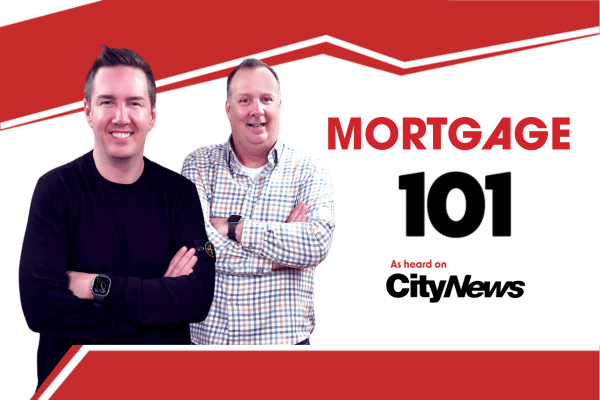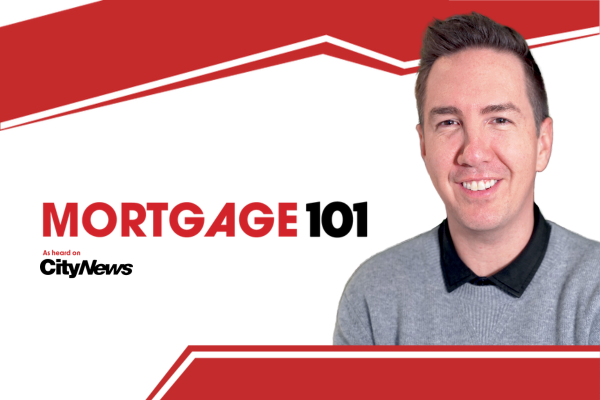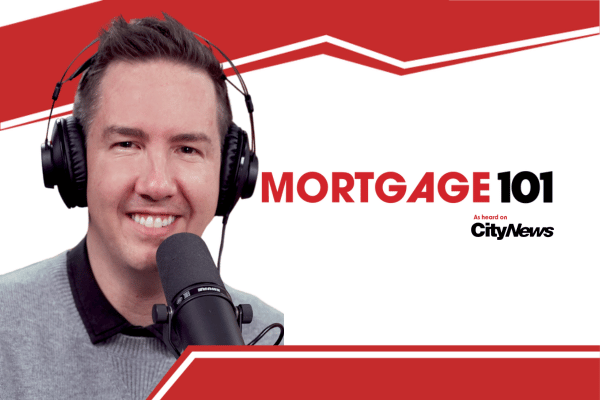Clinton Wilkins and Todd Veinotte are back this Spring to discuss the latest budget updates, including changes in mortgages and housing incentives. Plus, a debate between Beyonce and Dolly Parton country renditions and how the new housing incentives for new builds may expand the construction industry here in Nova Scotia!
Mortgage 101 – Special Guest Leanne Myles: Best steps to get your mortgage approved | November 2021 Part 2
In this special episode of Mortgage 101 with Clinton Wilkins and Todd Veinotte, as heard on CityNews 95.7, the guys bring in guest Leanne Myles to share her perspectives and experiences in the mortgage space. Leanne shares her best steps to get your mortgage approved, like the “two, two, two” method, having credit cards with the right limits and using them properly. The gang also takes deep dive into what payments count towards your credit report and what you can use to supplement it if you have thin credit.
Leanne is a proud Labradorian and an Associate Mortgage Broker at Clinton Wilkins Mortgage Team. Some of her specialties lie in private or alternative lending programs and helping credit-challenged clients get approved for a mortgage. She will dig deep through reports to uncover the root cause of their credit troubles and help them create a step-by-step plan to get them approved for their mortgage. When Leanne is not in the office, you can find her skiing, playing soccer, snowmobiling, and spending as much time as possible with her family.
Mortgage 101 with Clinton Wilkins & Todd Veinotte: Best steps to get your mortgage approved | November 2021 Part 2
Don’t feel like watching the video? Check out the transcript below.
Transcript:
New mortgage industry regulations from the Government of Nova Scotia
Todd Veinotte: [00:00:00:02] Leanne Myles, part of your team is here, Leanne is an associate mortgage broker, sounds like a fancy-schmancy title to me, Leanne. Is it?
Leanne Myles: [00:00:09:14] It’s a new title, new licencing in Nova Scotia that we have to abide by.
Todd Veinotte: [00:00:13:22] Oh yeah? What do you do? Tell everybody about it.
Leanne Myles: [00:00:16:18] Well, they brought new rules recently,
Todd Veinotte: [00:00:19:00] Who’s they? Stop being so vague.
Leanne Myles: [00:00:21:10] Okay. The government of Nova Scotia brought in new rules.
Clinton Wilkins: [00:00:24:06] The province.
Leanne Myles: [00:00:24:25] The province. Mortgage brokers had to complete a course, 13 modules, and then we had to write an exam. It was about a four hour exam.
Todd Veinotte: [00:00:34:14] And how did you do?
Leanne Myles: [00:00:36:17] I did it in half an hour, and I’m pretty sure I only had one that I didn’t make right.
Todd Veinotte: [00:00:40:08] Oh, is that right?
Leanne Myles: [00:00:41:12] Yes.
Todd Veinotte: [00:00:41:19] Good for you.
Clinton Wilkins: [00:00:42:07] So is that like confidence or skill, or you just feel like you really, you know, knocked it out of the park? I know you did a lot of studying.
Leanne Myles: [00:00:49:23] I did a lot of studying. I put the time in and what I didn’t know, I learned, and the only one that I didn’t know is the one with the calculation.
Todd Veinotte: [00:00:56:02] So this is why I asked the questions. Not him.
Clinton Wilkins: [00:00:59:08] I know I just love taking over, though, don’t you think?
Leanne brings new perspectives to Mortgage 101
Todd Veinotte: [00:01:03:03] Yes. But the audience may not, however, to that: Tell us about Leanne? What made you decide now is a good time to bring Leanne into the conversation?
Clinton Wilkins: [00:01:13:25] Well, you know, I think that we’ve always wanted to bring some guests on the show and I think for Financial Literacy Month, it’s good to bring some other perspectives. I mean, our audience has heard me talk about mortgage lending for years. Let’s bring in a little bit of other perspectives.
And you know, team is not just one person, right? And I think that’s so important. And Leanne really is very amazing with what she does and the relationships that she has with her clients. And I think in some cases, Leanne gets things done that Clinton would even try to get done. So, you know, hats off to Leanne.
Todd Veinotte: [00:01:45:07] Give me an example of that. Leanne, you tell me what you think that you would get done that Clinton does not get done.
What types of programs and files are Leanne’s specialty?
Leanne Myles: [00:01:52:16] There’s a few products that I’m very familiar with on the alternative side, as well as with some other lenders. You know, I have a couple right now buying a home. They both work part-time. They don’t have pay stubs yet, but he’s got a $5,000 pension and they’re buying a home for $450,000 and that’s been approved.
Todd Veinotte: [00:02:10:01] Okay, so alternative side. What exactly is that?
Leanne Myles: [00:02:12:26] Alternative is when you don’t fit traditional lending and maybe your income isn’t sufficient for a regular bank. Maybe you’re self-employed, you work on contract, that kind of thing. We take those people to alternative lenders.
Todd Veinotte: [00:02:27:08] So that’s really what that’s one of the things that sets you apart from just somebody going into their bank branch, whichever it might be, and saying, I want a mortgage and going to the corner office and doing that.
This is what separates and you’ve been talking about this. So I’m not going to ask you to mention it anymore because we’ve heard you say it enough.
Clinton Wilkins: [00:02:44:19] We’ve heard Clinton talk.
Todd Veinotte: [00:02:45:13] That’s right. But Leanne, this is kind of what sets you guys apart as to why you guys can do what other bankers can’t do or what bankers can’t do, right?
Leanne Myles: [00:02:51:26] Absolutely. And just having that knowledge and that, you know, all the different products that we have at our access and learning them and learning them inside out so that you can deploy them in the right moment.
Leanne thinks more people should know about the “two, two, two” method
Todd Veinotte: [00:03:01:28] Yeah. Absolutely, 100 per cent. So what do you think when it comes to Financial Literacy Month, you’ve dealt and Clinton’s talked a lot about this, but what would you like people to know? What are some things that you just, time and time again you think, “Man, I wish, people should know more about this stuff.”
Leanne Myles: [00:03:18:21] Okay, so first-time home buyers, millennials, it’s the rules of “two two two,” and that’s something that I think that many young people don’t understand. They come to me, they’ve bought a car, they feel really proud, they’ve got a couple of student loans, but they’ve never had any sort of revolving debt.
And so when you’re buying a house with five per cent down, you’re using the insurer CMHC, Sagen, Canada Guarantee, and when we use those people, they want to see us have, you know, revolving debt on their credit bureau, so when you’re 18 years old or 19 years old, I think it’s 19 in Nova Scotia before you can, you know, start credit. You need to start to build two credit cards.
Todd Veinotte: [00:03:59:23] Revolving debt that you’re referring to?
Leanne Myles: [00:04:01:28] Revolving debt. So a line of credit or a credit card, you need to have two of those. You need to have them up to $2,000 and you need to have them for two years.
Todd Veinotte: [00:04:10:09] So I guess some would say when you’re young, why would you need all of that stuff? Because some will be irresponsible and it’s not a good ending.
“If you don’t know the rules, you can’t get in the game.”
Leanne Myles: [00:04:18:28] And that’s okay, because the bank doesn’t want to lend that person the money anyway, if they’re going to be irresponsible. You have to learn how to manage that debt to prove to the bank that you can do it. It’s like a game. And if you know the rules of the game, you can play the game. If you don’t know the rules, you can’t get in the game.
Todd Veinotte: [00:04:35:15] So how would anybody young know this? They wouldn’t, Generally?
Leanne Myles: [00:04:38:28] They wouldn’t, generally. I think Clinton does a great job.
Clinton Wilkins: [00:04:41:05] And you know what? They’ve made a lot of mistakes. Like, Leanne, you’ve seen this. And I think some of the alternative lending that you have done is maybe, Todd, like it’s a result of, making mistakes when you’re younger.
I would say for me, I don’t know about you, Leanne, but a lot of the issues that I see on consumers’ credit bureaus, are student loans, cell phones, and the smallest little credit card accounts. People don’t feel like a $10 payment is important. Which I think is just, I don’t know, it’s around education.
Leanne Myles: [00:05:12:19] It’s education. And it’s also getting that education in the right point in your life because us telling people, you know, when they’re 17, 18 years old, they’re hearing it, but they’re not hearing it in the right moment.
So I think getting the messaging out there at all times because we’re not hitting the people, maybe at the point in their life when they need it and by going on repeat and explaining this stuff, we’ll hit them and maybe it’ll come into their minds that they should actually take action and do this, right?
Having a credit card with the right limit and using it properly
Clinton Wilkins: [00:05:38:07] And start building it. And I mean, maybe that’s the goal here, Todd. And you know, Leanne, like we’re speaking to people, maybe young people aren’t listening to our show.
Todd Veinotte: [00:05:47:01] Some would be.
Clinton Wilkins: [00:05:47:22] Maybe there’s not a lot of 18 and 19 year olds. Maybe they are. I don’t know. But maybe their parents are to be like, “Hey, kid, you should get a credit card and maybe make sure that you use it responsibly.” Use it and pay it, use it and pay it, right?
Leanne Myles: [00:06:00:00] You need to get two, because I have had many people that have come to me with one credit card, maybe with a $4,000 limit, and it’s just not enough.
Todd Veinotte: [00:06:08:25] So if somebody gets a credit card at that particular age, they should be using it to get a points card to use it and pay it off on a monthly basis? Or what or should they not use it?
Leanne Myles: [00:06:19:05] I wouldn’t use it as money. I would use it to, I would set my credit card up to be fully paid off at the end of the month.
Todd Veinotte: [00:06:26:14] But use it, not carrying a balance, but having it active. Don’t just get it and put in a filing cabinet.
Leanne Myles: [00:06:32:18] You need to use it, but don’t utilize it any more than 50 per cent of the balance. So if you get a $2,000 limit, never go beyond $1,000 and that includes the interest.
What payments count towards your credit report?
Phone bills: No
Clinton Wilkins: [00:06:42:02] Yeah, because I think the one key is whatever reports on the statement is what reports on the credit bureau.
Todd Veinotte: [00:06:47:19] What about Telis, Eastlink, those types of things?
Clinton Wilkins: [00:06:52:05] Make it automatic, I think.
Todd Veinotte: [00:06:53:16] No, but is that all part of this revolving debt?
Leanne Myles: [00:06:56:25] No.
Todd Veinotte: [00:06:57:06] It’s not?
Leanne Myles: [00:06:58:02] No. Your cell phone does not form part of that matrix.
Todd Veinotte: [00:07:01:08] It does not? But however, it can hurt you can it not? If you had payments not made?
Leanne Myles: [00:07:06:08] Absolutely.
Todd Veinotte: [00:07:07:03] That doesn’t seem fair. It’s not part of the matrix, but if you’re not making the payments, it’s going to be punitive. I don’t think that’s fair.
Leanne Myles: [00:07:12:29] It’s not fair. The rules changed about five years ago. I will tell you, like 10 years ago in this industry, if we were dealing with a client and cash flow was an issue we would say, “Well, just don’t pay your cell phone bill, but pay your credit card bill, because your cell phone’s not reporting.”
Well, that stuff is reporting now, so it doesn’t give you the points, but it, you know, you need to pay your bills. If you’re going to take something on, you need to be responsible and pay it.
New car purchase: No
Todd Veinotte: [00:07:36:08] What about a new car purchase? Like something, a small lease. Something like that? Is that a good thing to do?
Leanne Myles: [00:07:42:17] It is. It shows that you’re you have the ability to pay, but if you don’t get those revolving debts, you’re not in the game.
Todd Veinotte: [00:07:47:08] Is that a revolving debt, though?
Leanne Myles: [00:07:49:19] No, it’s not.
Clinton Wilkins: [00:07:50:05] That’s an instalment loan.
Leanne Myles: [00:07:51:03] It’s an instalment loan.
Clinton Wilkins: [00:07:52:07] So I think it’s about the mix, right, Leanne? Like, it’s about having some instalment, it’s about having some revolving, and it’s about managing the credit appropriately.
You know, you don’t want to go above that utilization. You want to make sure you make all your payments. And you know, Todd, I think cell phones, they’re notorious. Honestly notorious.
Pre-authorized payments: No
But what I always say to consumers is get it on an automatic payment. Maybe that’s something that comes off the credit card and then you pay off the credit card once a month.
Todd Veinotte: [00:08:17:16] Absolutely.
Leanne Myles: [00:08:18:10] Called a pad, is it?
Clinton Wilkins: [00:08:19:05] Yeah, like a pre authorized debit, or pre authorized payment.
Todd Veinotte: [00:08:22:23] What about insurance, payments and all that? That’s not part of it?
Leanne Myles: [00:08:25:24] Doesn’t get reported.
What payments you can use to supplement a credit report
Clinton Wilkins: [00:08:27:00] I think the only time, maybe that we can use some of this additional stuff is if there is really thin credit. Sometimes it’s new to Canada or, you know, they’ll allow us to use things like rent payments to kind of supplement.
Leanne Myles: [00:08:39:28] Or Nova Scotia Power. So if I’ve got somebody that is new to Canada or even a student and they’ve had a credit card, maybe for three years and it’s a $4,000 limit, and maybe we can prove that they have 12 months of paying their rent. We can use the rent as a supplemental. It’s just it’s harder to get it done.
If you want a sure shot at getting a mortgage. Follow the rule of “two, two, two.”
Todd Veinotte: [00:09:01:11] Well, I would say that that’s excellent information. And guess what? We are plum out of time with you as a guest. What do you think of that, Leanne?
Leanne Myles: [00:09:07:04] Wow, that was fast.
Clinton Wilkins: [00:09:08:04] Time flies.
Todd Veinotte: [00:09:09:00] How do people get a hold of you, Leanne?
Leanne Myles: [00:09:10:24] They can call us here at the office 902-482-2770.
Todd Veinotte: [00:09:13:09] But we want them to call you though.
Clinton Wilkins: [00:09:15:15] It all goes to the same place.
Leanne Myles: [00:09:16:14] It all goes to the same place and the girls will get me.
Todd Veinotte: [00:09:19:01] But ask for Leanne Myles?
Leanne Myles: [00:09:20:25] Absolutely.
Todd Veinotte: [00:09:21:03] Do you have a nickname?
Clinton Wilkins: [00:09:23:09] Not really.
Clinton Wilkins: [00:09:24:03] Hey, you? Just call me?
Todd Veinotte: [00:09:26:27] Thank you, Leanne.
Leanne Myles: [00:09:27:25] You’re welcome.
Todd Veinotte: [00:09:28:18] That’s Leanne Myles, and she’s an Associate Mortgage Broker. Give them a call here. Is it Centum? Is that what we’re calling you?
Clinton Wilkins: [00:09:34:14] Centum Home Lenders is our franchise, but we really kind of refer to it, and when we answer the phone it’s Clinton Wilkins Mortgage Team. And you know, we are a team and we all work together.
Todd Veinotte: [00:09:41:12] You got it. Okay, thank you. We’ll be right back on CityNews 95.7.
If you have any questions, get in touch with us at Clinton Wilkins Mortgage Team! You can call us at (902) 482-2770 or contact us here.


